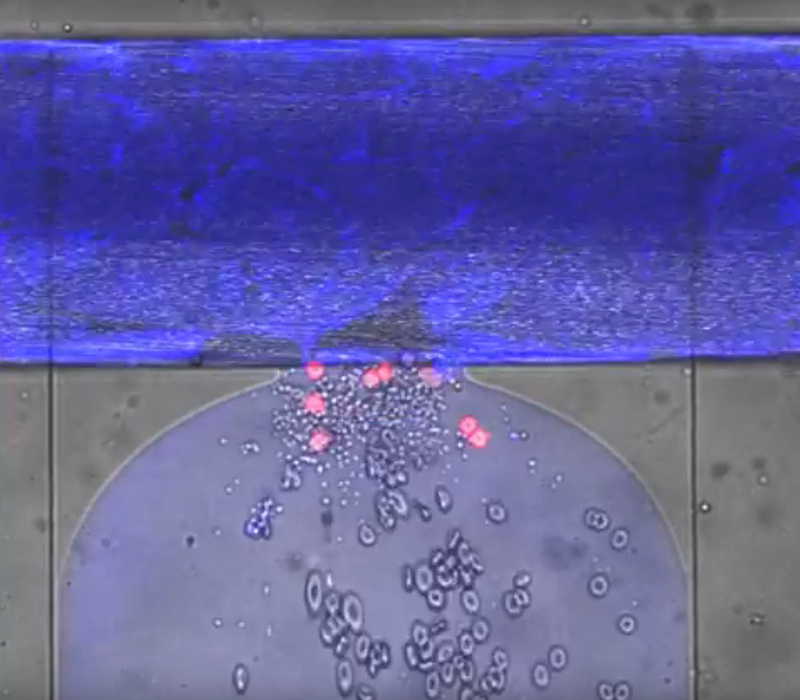
Image credit: Emory Health Sciences
A digital and physical model of the complete environment around blood clots may help researchers further understand blood vessel injury.
“Current methods to study blood clotting require isolation of each of these components, which prevents us from seeing the big picture of what’s going with the patient’s blood clotting system,” said lead author Wilbur Lam, assistant professor in the Department of Pediatrics at Emory University School of Medicine and in the Wallace H. Coulter Department of Biomedical Engineering at Georgia Tech and Emory University.
The model includes human endothelial cells cultured on top of a “trap door,” a pneumatic valve. This valve can be opened to replicate a 130 micrometer ‘wound’. The system can simulate all aspects of blood vessel injury, including blood loss due to trauma, clot formation by whole blood, and repair of the blood vessel lining, Lam’s team said. It also responds to manipulation by drugs and can be altered to reproduce clotting disorders.
The project is a joint venture between Emory University, Georgia Tech, and the Blood Center of Wisconsin. Yumiko Sakurai, Elaissa Hardy, and Byungwook Ahn are co-first authors.




